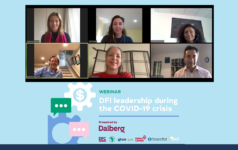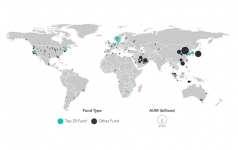Dalberg uses cookies and related technologies to improve the way the site functions. A cookie is a text file that is stored on your device. We use these text files for functionality such as to analyze our traffic or to personalize content. You can easily control how we use cookies on your device by adjusting the settings below, and you may also change those settings at any time by visiting our privacy policy page.
Gender lens and gender smart investing has seen tremendous growth in the past several years – in the past year alone, the size of the public and private market has nearly doubled. There is clear investor interest in bringing a gender analysis into financial analysis. Yet despite this growth, some investors still question whether gender lens investing is simply the latest trend that will be set aside in the new year.
There are a few key things that the sector can do to mitigate against that potential risk:
- Build the business case: GLI can relate to investing in female entrepreneurs, investing in organizations that have gender diversity in senior management, investing in organizations that focus on gender diversity and equity throughout their staff, and investing in organizations that have products and services that target female consumers. Clear data exists demonstrating the business benefit of these efforts. Many venture capital firms have seen female founders outperform their male peers, yet female founders only received only 2% of venture capital in the US last year— highlighting a large untapped opportunity for investors. We know that gender diverse teams can often deliver better returns with lower volatility and women control a large amount of consumer spending in the US, creating a strong market for products and services that are directed to their needs.
Some of these data points are not new, but they have not always resulted in dramatic changes in the way that investors are doing business. We are now at a critical moment. While there is enthusiasm for gender lens investing, we have an opportunity to test various gender investment strategies and conduct rigorous evaluations to continue to strengthen the business case for GLI. The more data that demonstrates that a gender analysis is a critical component of any financial analysis based on its potential to maximize returns and/or minimize risk, it’s far less likely to be tossed aside when an investor or organization faces financial difficulty.
- Identify intersections: We don’t always need to think of gender as a separate, unique impact lens sitting alongside environmental concerns and other social concerns. A gender lens is often overlapping and intersecting with other impact or investment themes. For instance, investments focused on climate change and agriculture must take into account women’s needs and norms given that nearly 40% of the world’s smallholder farmers are women. When we look at building supportive workplaces, there is emerging evidence that general inclusive policies that support women and men to improve work-life balance through childcare support, flexible work arrangements, and health services can have a positive impact on employee turnover and absenteeism. Thus, there is an argument to not just invest in organizations that commit to flexibility for women or gender wage equity, but invest in organizations that prioritize inclusiveness and overall wage equity for the same role regardless of gender, race, sexual orientation, or academic background. When a gender analysis is embedded into these other investment strategies, it’s more likely to become ingrained as part of the process of doing business—a new kind of business as usual—and will have a better chance at longevity.
- Look in the mirror: Finally, it can be useful for investors that are serious about adopting a gender lens should try to embody the changes they wish to see in their investees. When an organization applies the same principles to themselves and experiences the business benefits, then it can provide strong momentum and incentives to apply this lens to investments. Embodying a gender and inclusion lens in an organization takes concerted efforts. We learned from our own experience at Dalberg that intentions and values do not automatically translate into results. As an organization, Dalberg has a strong gender diversity with over 50% female staff. However, in the US, our staff does not always reflect the racial and economic diversity of the cities in which we live and work. We are now taking active steps to foster a more diverse, equitable, and inclusive culture—through unconscious bias training, deliberate diversity recruitment efforts, de-biasing processes such as resume reviews, and continuing to ensure our clients and client work is consistent with values. This is just the beginning of our strategy—and we will continue to share ideas, lessons learned and challenges as we move further in the process. But efforts like this are a big part of the answer to the question we’ve heard from investors. How can you ensure that gender lens investing isn’t just another trendy topic? Embody the values of gender equity that you want to support. Incorporate the strengths you are looking for in your investments. Become a model for the enterprises you believe will succeed. The business case is as strong for the investor as it is for the investee.
Not all of these tactics will make sense for every organization or investor, but they can provide a guide for the sector as a whole as we look to solidify gender lens investing as just a way to do business.

















